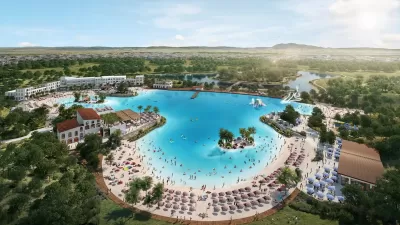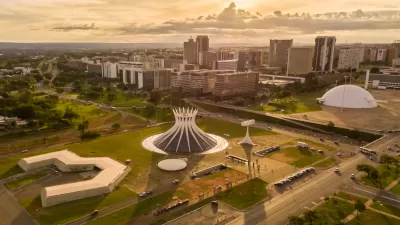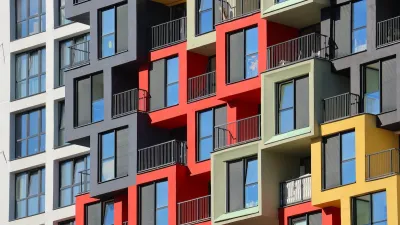A proposed plan to build a new city in the Bay Area is light on details and heavy on idyllic renderings.

A newly revealed set of AI-generated (and occasionally impossible) renderings provide a vague vision of a proposed new city backed by tech financing.
But as Kyle Barr points out in Gizmodo, “You don’t have to stray too far into science fiction or comic book tales to find examples of megalomaniacal tech businessmen creating their own ‘utopian’ metropolises, before—inevitably—everything goes to hell.”
The renderings provided by California Forever, the parent company of project developer Flannery Associates, “show a sunny green town sitting amid rolling hills, farms, and windmills. The text describes a walkable city with solar farms, open land, and ‘good-paying local jobs.’ The company even says it’s ‘also interested’ in looking at ways to support homeownership using down-payment assistance,” according to an article by Wes Davis in The Verge. But “The website is otherwise pretty light on details about the city itself, with no specifics about a population, its size, or how it will sustain itself.”
Barr’s Gizmodo article adds, “Flannery Associates said it has purchased more than 50,000 acres in eastern Solano County since 2018. Previous reports showed the company spent more than $800 million buying up parcels of farmland in the Bay Area from Fairfield all the way to Rio Vista, though up until now there had been little to no communication from the company about why, and what the hell they planned to build.”
The project would still need approval from local officials and would require a ballot initiative to permit development on land zoned for agriculture.
FULL STORY: ‘California Forever’ website touts the city tech billionaires are trying to build

Study: Maui’s Plan to Convert Vacation Rentals to Long-Term Housing Could Cause Nearly $1 Billion Economic Loss
The plan would reduce visitor accommodation by 25,% resulting in 1,900 jobs lost.

North Texas Transit Leaders Tout Benefits of TOD for Growing Region
At a summit focused on transit-oriented development, policymakers discussed how North Texas’ expanded light rail system can serve as a tool for economic growth.

Why Should We Subsidize Public Transportation?
Many public transit agencies face financial stress due to rising costs, declining fare revenue, and declining subsidies. Transit advocates must provide a strong business case for increasing public transit funding.

How to Make US Trains Faster
Changes to boarding platforms and a switch to electric trains could improve U.S. passenger rail service without the added cost of high-speed rail.

Columbia’s Revitalized ‘Loop’ Is a Hub for Local Entrepreneurs
A focus on small businesses is helping a commercial corridor in Columbia, Missouri thrive.

Invasive Insect Threatens Minnesota’s Ash Forests
The Emerald Ash Borer is a rapidly spreading invasive pest threatening Minnesota’s ash trees, and homeowners are encouraged to plant diverse replacement species, avoid moving ash firewood, and monitor for signs of infestation.
Urban Design for Planners 1: Software Tools
This six-course series explores essential urban design concepts using open source software and equips planners with the tools they need to participate fully in the urban design process.
Planning for Universal Design
Learn the tools for implementing Universal Design in planning regulations.
Ascent Environmental
Borough of Carlisle
Institute for Housing and Urban Development Studies (IHS)
City of Grandview
Harvard GSD Executive Education
Toledo-Lucas County Plan Commissions
Salt Lake City
NYU Wagner Graduate School of Public Service





























